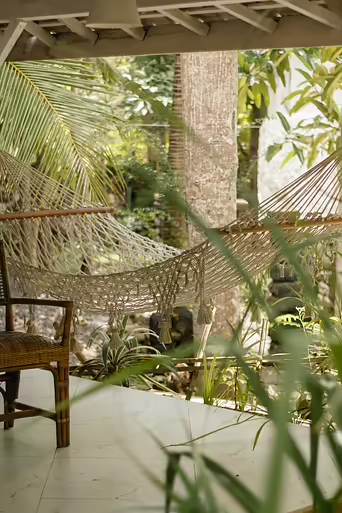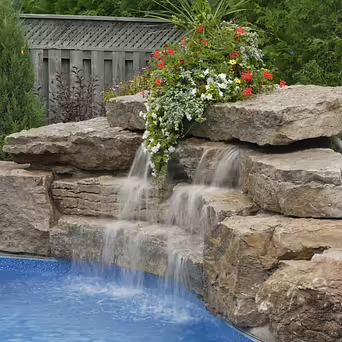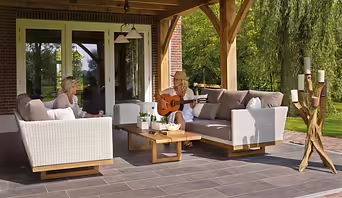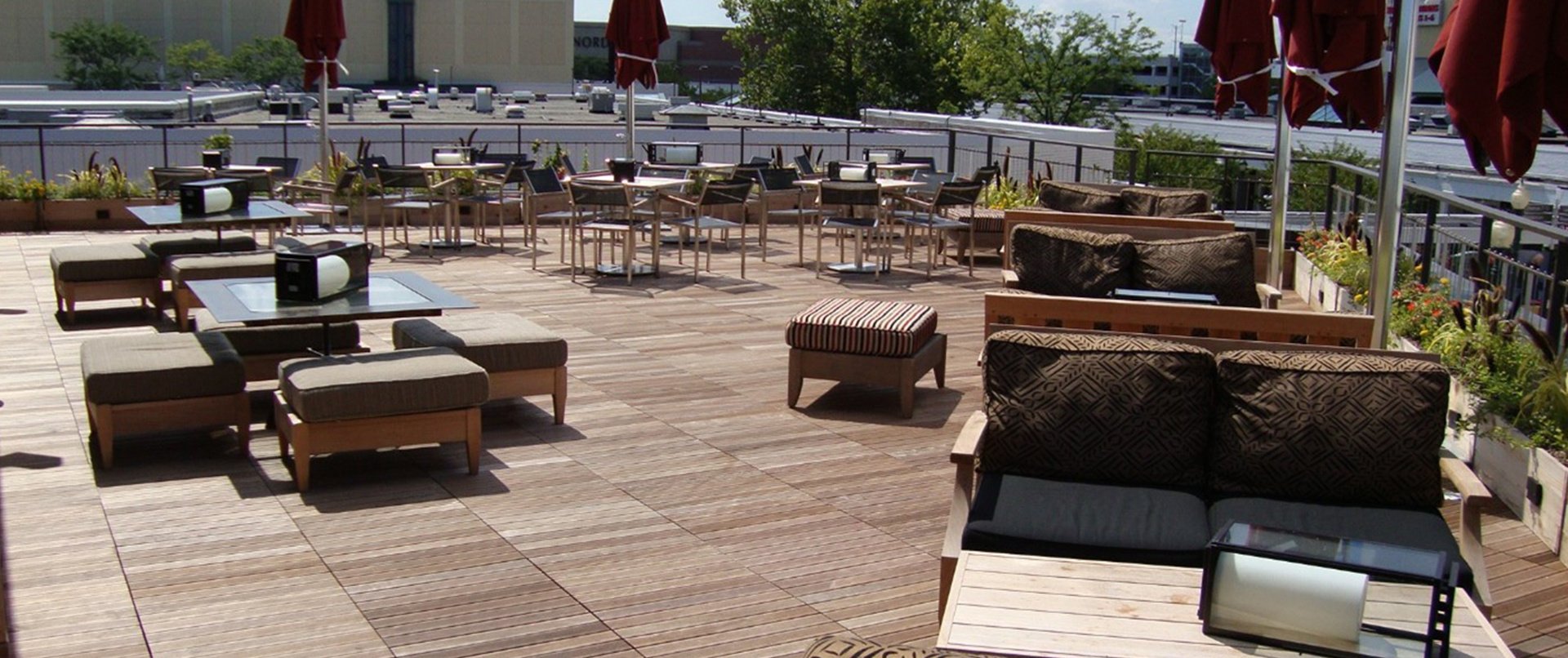Adding natural elements to your home’s design is simple. You can bring the outdoors inside by adding plants, artwork, or furniture with natural materials like wood, stone, and clay. These items will help create an atmosphere of serenity and promote a connection with nature. Let’s look at ways you can incorporate biophilic design ideas on your property.
Maximizing Views of Nature
Take advantage of any outdoor space you may have access to by enjoying the view of nature. This could include installing large windows to enjoy nature's beauty from within your home or adding a deck or patio to take in the surrounding landscape.
Incorporating Natural Colors
Using earthy tones and neutral shades can help create a calming atmosphere that is inviting and relaxing. Consider painting walls in muted shades of green, brown, blue, or gray for a more tranquil effect.
 Adding Plants
Adding Plants
Whether you have an indoor garden, balcony space, yard area, or all three—incorporating plants into your home can turn any room into an oasis. Plants look beautiful and are known for their air-purifying qualities and ability to reduce stress.
Biophilic design principles are easily incorporated to benefit physical and mental well-being into any home or landscape. You can create an aesthetically pleasing and calming space with the right combination of natural elements, colors, and views of nature.
What Are the Elements of Biophilic Design?
The purpose of biophilic design is to create an environment that encourages a connection with nature. This can be done by incorporating natural elements into your built structure and surrounding landscape, such as plants, natural materials, and colors. Doing this makes your space more aesthetically pleasing and improves the physical and mental well-being of those who live there.
With thoughtful changes or additions, you can transform a space into one that inspires joy while promoting healthy living habits. Let's explore what biophilic design elements could enhance your home’s interior or landscape.
Natural Light
Bringing natural light into a space helps create an inviting atmosphere and can improve cognitive functioning.
Natural Materials
Incorporating natural materials such as wood, stone, and plants into the built environment can help foster a connection with nature in people who spend time there.
 Water Features
Water Features
The sound of running water is calming and therapeutic for many people, so incorporating fountains or other water features into the biophilic design can benefit mental health and well-being.
Indoor Plants
Adding indoor plants to any space creates a sense of life that brings the outdoors while providing physical benefits like improved air quality from the plants' oxygen production capabilities.
Green Roofs
Installing green roofs on buildings helps bring nature back into urban areas while providing insulation benefits, reducing energy costs associated with heating and cooling systems.
Biomorphic Forms
Using shapes inspired by nature when designing buildings is another way to bring elements of the outdoors inside without having actual living things present in the space.
Dynamic Spaces
Creating dynamic spaces that allow people to move and interact can help foster a connection to nature while allowing for greater creativity and collaboration in the design process.
Shared Spaces
Incorporating shared outdoor areas into biophilic design plans allows people to connect in natural environments, strengthening their bond to nature and each other.
Biophilic Design Ideas: Designing a Biophilic Yard

When designing a biophilic yard, it is essential to consider incorporating natural elements to benefit humans and local wildlife.
Planting native species of trees, shrubs, and flowers can provide a habitat for birds and other wildlife while creating attractive visual features for people. Native plants also require less water, fertilizers, and pesticides than non-native species.
Creating paths with stone walkways or decomposed granite can provide easy access to different garden areas while adding visual interest.
Incorporating water features such as ponds, streams, or fountains can create habitats for fish and amphibians while providing soothing sounds of running water.
Vertical gardens made up of climbing plants can provide habitat while adding a sense of enclosure. These are perfect for small city yards.
Lighting is another crucial element to consider when designing a biophilic yard. By using soft lighting instead of harsh lighting or spotlights, you can create a restful ambiance in your outdoor space at night and deter pests. Night lights that mimic fireflies or twinkle stars provide additional light without being too intrusive.
Including seating under pergolas or arbors adds a comfortable place to relax outdoors and provides shelter from the sun or rain when desired.
Click here to see biophilic design examples.
Bringing Biophilic Design Ideas to Your Living Room
Biophilic design for the living room is about creating a space that connects us to nature and natural elements. This happens in various ways, from using raw materials such as wood or stone to incorporating aspects of nature, such as plants, into the design.
- A great way to bring biophilic design into the living room is to use large windows that open up to a beautiful view of nature outside or create an indoor-outdoor transition by having a garden outside the window.
- Adding a vertical garden wall in the room can provide a visual connection to nature and help purify the air within our homes.
- To add even more of a connection to nature within your living space, you could incorporate natural materials like bamboo furniture or hand-woven textiles into your decor.
- Lighting fixtures that utilize natural light sources, such as skylights or LED lights, can create ambiance and warmth in the room.
- Enhancing auditory experiences with nature soundscapes like birds singing or water trickling contributes to the sense of being connected with nature within your living space.
- Our favorite biophilic design space is the roof! Green roofs or rooftop gardens make the most of your outdoor living space and give you a new way to appreciate nature.
Consider creating a rooftop deck garden for the summer! Get ideas here.
What Are the Benefits of Biophilic Design?
Biophilic design has health benefits with the potential to enhance our lives. It can improve our physical, mental, and emotional well-being by incorporating elements of nature into our built environment. This can range from improved concentration and productivity at home to reducing stress and anxiety in public spaces.
People have a greater connection with nature when they can see or interact with it directly, rather than just viewing images of nature on a computer or television screen.
Green spaces within cities are known to reduce noise levels by acting as barriers between buildings and busy roads. This could be beneficial for lowering insomnia rates, which are often higher in densely populated urban environments.
Biophilic design may help create more sustainable cities by incorporating vegetation and other natural features into the built environment; this means fewer resources are required for upkeep over time compared to traditional building designs, which require large amounts of energy for heating and cooling systems.
Biophilic designs may encourage people to connect more often by providing green spaces that allow for peaceful conversations away from busy streets and artificial lighting, harming sleep cycles and overall health.
Are You Interested in Incorporating Biophilic Design Ideas on a Rooftop Deck or a Traditional Deck?
Browse our deck products to find the best selection of wood tiles and metal planter cubes.
Important Notice: Bison Innovative Products recommends that all rooftop deck systems should be installed by a licensed contractor with at least 2 years of proven experience. Plans/designs for a rooftop deck should be reviewed by a safety/structural engineer before commencing construction. The roof must be able to safely carry the static and live load weights of the rooftop deck, and any amenities added along with the appropriate density of any insulation to resist crushing and damaging the waterproof membrane. Adding items such as hardscaping features, hot tubs, or pools to a rooftop deck requires additional guidance and oversight from an engineer. Property owners should research and abide by any building codes and other regulations to obtain the required permits prior to having a rooftop deck installed. Please read all product specifications posted on Bisonip.com to review all information prior to any installation.
.png?width=100&height=100&name=BisonIP-logo-PMS425-2023%20(1).png)
.jpg?width=1920&height=806&name=americanpsych_1%20(2).jpg)



